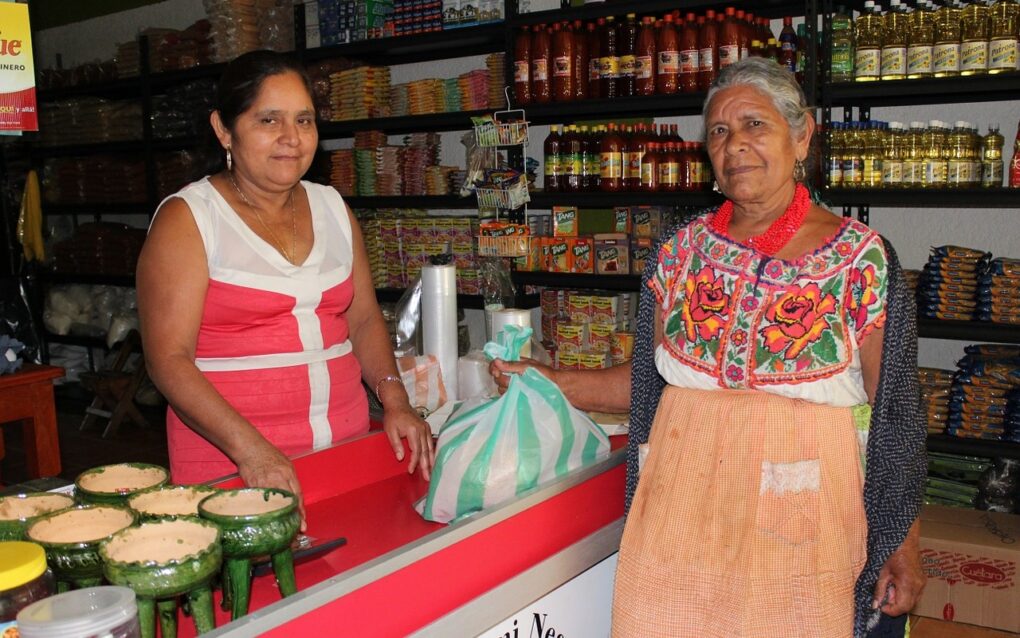
Indigenous Traditions and Customs
North America is a vast continent that is home to a large number of different peoples, each with their own distinct and unique traditions and customs.
The Eskimos live in small family communities, adhering to the principles of matriarchy (the primacy of women). The husband joins his wife’s family; if she dies, the husband returns to his parents’ home; the children do not leave with him. Kinship is considered along the lines of the mother, marriages are concluded at an early age by prior arrangement. The custom of temporary exchange of wives is often practiced as a friendly gesture or as a sign of special affection. Shamanism is well developed in the religion, and shamans are the leaders of the cult. Severe natural conditions, the constant threat of hunger and death in the event of failure in the hunt, the feeling of complete powerlessness before the power of harsh Arctic nature, all this forced the Eskimos to seek solace and salvation in carrying out rites and rituals. The use of various magical incantations, amulets and amulets was widespread in popularity.
The Aleuts worshipped the spirits of dead animals, especially whale, when a male hunter in the village died he was buried in a cave, put between the two ribs of the whale.
The Indian tribes of North America believed in the supernatural origin of the world, which they believed was created by mysterious forces, the Sioux called them Wakan, the Iroquois said Orenda, the Algonquin said Manitou, and Kitchi Manitou was the supreme spirit to whom all obeyed. Manitou’s son Wa-sa-ka sculpted a tribe of people out of red clay, taught them how to hunt and farm, and taught them how to dance ritual dances. Hence the special reverence of the Indians for the color red; they rubbed red paint on their bodies and faces on especially solemn occasions, such as girls in the California and North Dakota tribes at the wedding ceremony.
Also the Indians, in the development of many nations of the world, deified nature and its forces and worshipped the deities of Sun, Sky, Fire, or Heaven. They also worshipped spirits, patrons of the tribes (various plants and animals), which were called totems. Such a patron spirit could be every Indian, seeing him in a dream, the man immediately towered in the eyes of his tribesmen could decorate themselves with feathers and shells. By the way, the martial headdress of eagle feathers was put on by chiefs and outstanding warriors only on very solemn occasions, it was believed that it had great spiritual and healing power. A special axe with a long handle of caribou antler – tomahawk – was also considered a symbol of any man’s valor as a warrior.
The ancient ritual of lighting the pipe of peace is one of the famous Indian traditions, when the Indians sat in a large circle and handed each other a unique symbol of peace, prosperity and well-being – the pipe of peace. The ritual was started by the most respected man in the tribe, a chief or an elder, he smoked a pipe, took a drag or two, and passed it on in a circle, and all participants of the ceremony had to do the same. This ritual was usually performed when peace treaties were made between the tribes.
Famous Hawaiian traditions and customs are considered the presentation of flower garlands (lei), which are handed along with a kiss on the cheek to all visitors beautiful girls Hawaiian. Stunningly beautiful lei can be made of roses, orchids and other exotic tropical flowers, and to remove the garland, according to legend, can only be in the presence of the person who gave it. Traditional Hawaiian aloha means not only words of greeting or farewell, it reflects the whole range of feelings and experiences, it can express compassion and kindness, joy and tenderness. The natives of the islands themselves believe that aloha is not just a word, but the basis of all life values of the people.
The culture of the island of Hawaii is rich in superstitions and omens, which people still believe in, for example, it is believed that the appearance of rainbows or rain is a sign of special favor of the gods, especially good when the wedding takes place in the rain. And the island is also famous for mesmerizing dance hula: rhythmic movements of the hips, graceful hand passes and unique costumes (lush skirt made of raffia palm tree fibers, wreaths of bright exotic flowers) with rhythmic music on drums and other percussion instruments. In ancient times, it was a ritual dance performed exclusively by men.
